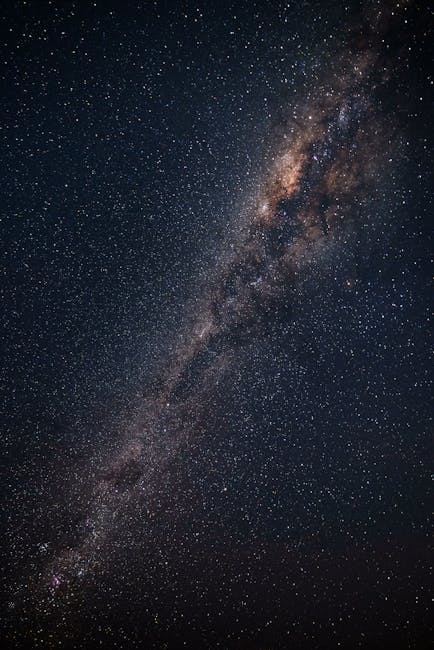Euclid Space Telescope Reveals Stunning Cosmic Cloud: A November 18, 2025 Masterpiece

Euclid Space Telescope Reveals Stunning Cosmic Cloud: A November 18, 2025 Masterpiece

The cosmos continually astonishes us with its boundless beauty and profound mysteries. On November 18, 2025, humanity is poised to receive another breathtaking revelation from the European Space Agency’s (ESA) Euclid Space Telescope. This cutting-edge observatory, designed to unravel the secrets of the dark universe, is set to unveil an incredibly detailed image of a previously unseen cosmic cloud. This highly anticipated release promises to be a masterpiece, not only for its stunning visual appeal but also for the invaluable insights it will offer into the universe’s fundamental workings. This article explores the significance of this impending discovery, delves into the Euclid mission’s capabilities, and considers what this cosmic masterpiece means for our understanding of galactic evolution and the invisible forces shaping our universe.
The euclid mission: A quest for the dark universe
The Euclid Space Telescope is a cornerstone mission of the European Space Agency, launched with the ambitious goal of mapping the large-scale structure of the universe across ten billion years of cosmic history. Its primary objective is to investigate the nature of dark energy and dark matter, which together constitute approximately 95% of the universe but remain largely enigmatic. Euclid achieves this by precisely measuring the shapes of billions of galaxies and their distances from Earth, thereby creating a three-dimensional map of the cosmos. Equipped with two sophisticated instruments – the Visible Instrument (VIS) and the Near-Infrared Spectrometer and Photometer (NISP) – Euclid observes light spanning visible to near-infrared wavelengths, enabling it to peer deep into cosmic time and study the subtle imprints left by dark energy and dark matter on the distribution of galaxies.
Here is a brief overview of Euclid’s key instruments:
| Instrument | Wavelength Range | Primary Function |
|---|---|---|
| VIS (Visible Instrument) | 550-900 nm | Measures galaxy shapes to study weak gravitational lensing, revealing dark matter distribution. |
| NISP (Near-Infrared Spectrometer and Photometer) | 920-2000 nm | Measures galaxy redshifts and photometric distances, mapping the 3D distribution of galaxies and dark energy. |
Unveiling the cosmic cloud: A glimpse into formation
The upcoming announcement on November 18, 2025, centers around a newly discovered cosmic cloud, promising to be one of Euclid’s most visually striking and scientifically rich early observations. While details are still under wraps, astronomers anticipate this cloud could be a colossal star-forming region, a distant nebula illuminated by nascent stars, or perhaps a filamentary structure of gas and dust connecting galaxies. Such cosmic clouds are the crucibles where stars are born and where planetary systems begin to take shape. Observing them with Euclid’s unparalleled resolution and sensitivity to faint, extended sources allows scientists to study the intricate processes of stellar nurseries, the dynamics of interstellar medium, and how these regions evolve over cosmic timescales. This particular cloud, dubbed a “masterpiece,” is expected to provide unprecedented detail, offering clues about its composition, density, and interaction with surrounding cosmic environments, potentially reshaping our understanding of star formation in diverse galactic settings.
The significance of november 18, 2025: A date for astronomical history
November 18, 2025, marks a significant moment for the global astronomical community and the public alike. This date is not merely a scheduled data release; it represents a planned unveiling of a particularly exceptional observation that highlights Euclid’s scientific prowess and aesthetic capability. The anticipation surrounding this event stems from the expectation that this cosmic cloud image will be unlike anything seen before, pushing the boundaries of what ground-based telescopes or even earlier space missions could capture. Such a high-profile reveal often signifies that the data presents either a uniquely beautiful object or a profound scientific anomaly, or both. Scientists will meticulously analyze the cloud’s spectral data and morphological features, seeking to understand its physical properties, its distance, and its implications for theories of galaxy formation and evolution. For the public, it will be a chance to witness the universe’s artistry through the eyes of one of humanity’s most advanced observatories.
Beyond the masterpiece: Euclid’s ongoing legacy
While the November 18, 2025, cosmic cloud is set to be a highlight, it is just one piece of the vast cosmic puzzle Euclid is diligently assembling. The telescope’s primary mission continues for several more years, systematically mapping billions of galaxies across huge swathes of the sky. Each data release, each new image, contributes to a comprehensive dataset that will enable scientists to refine models of cosmology, test theories of gravity, and gain deeper insights into the elusive dark universe. This “masterpiece” cosmic cloud serves as a powerful demonstration of Euclid’s observational capabilities and its potential to uncover unexpected phenomena. It inspires further exploration, encourages new hypotheses, and fosters a renewed sense of wonder about our place in the cosmos. The images and data from Euclid will undoubtedly fuel scientific research for decades, leaving a profound and lasting legacy on our understanding of the universe.
The impending reveal from the Euclid Space Telescope on November 18, 2025, promises to be a landmark event in space exploration and cosmology. The “stunning cosmic cloud” is anticipated to be a visual spectacle, but its true value lies in the scientific revelations it will offer about the mechanisms of star formation, the composition of the interstellar medium, and the broader evolution of the universe. This particular observation underscores Euclid’s exceptional ability to peer into the hidden intricacies of the cosmos, from the elusive dark matter to the majestic nurseries of stars. As we eagerly await this cosmic masterpiece, it serves as a powerful reminder of humanity’s relentless pursuit of knowledge and our capacity to marvel at the universe’s infinite wonders. The data from this discovery will undoubtedly contribute significantly to our ongoing quest to understand the fundamental forces that shape our existence.
No related posts
Image by: Philippe Donn
https://www.pexels.com/@philippedonn

